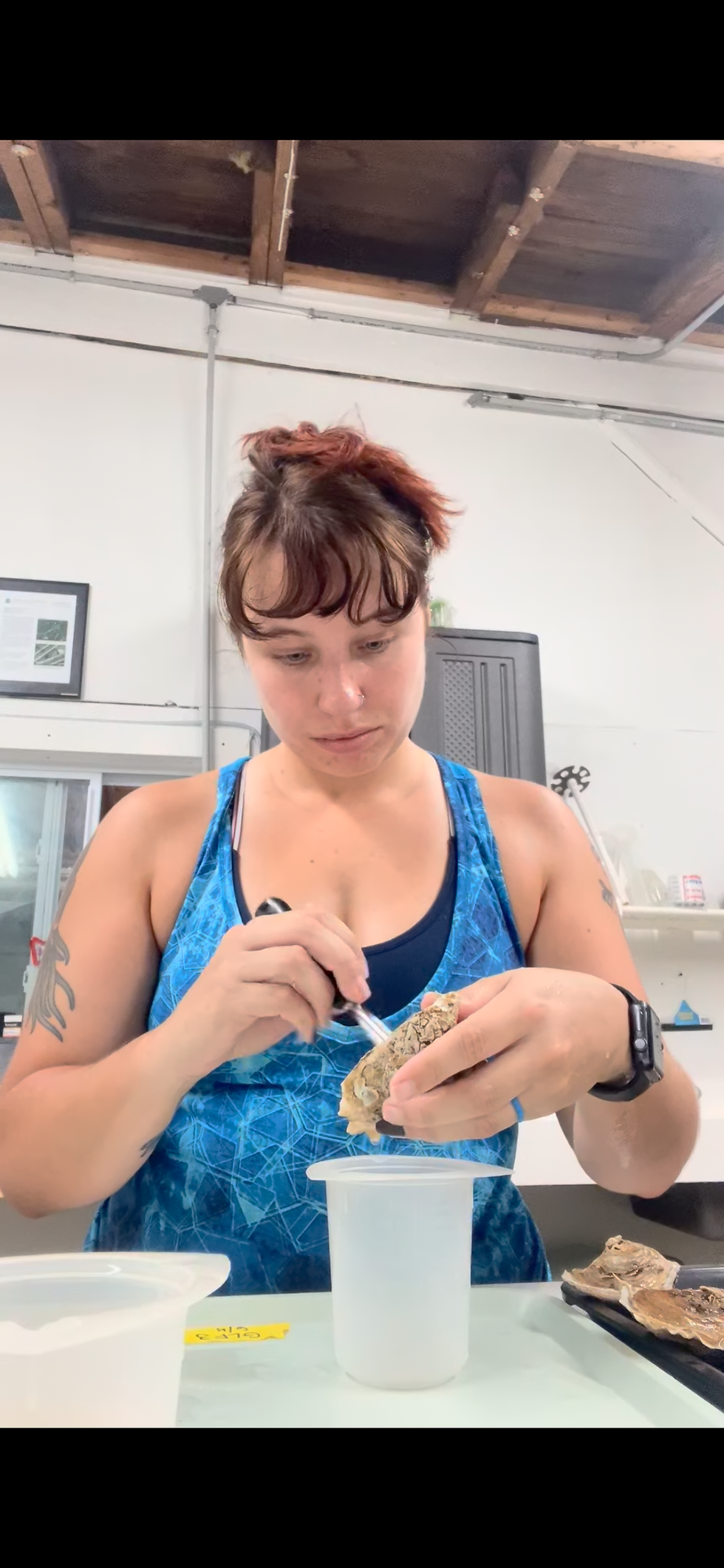Choosing the right mesh & bags for your seed order
- Emily Allen
- Feb 16, 2024
- 4 min read
Updated: Feb 19, 2024
The season is off to a strong start here at Oyster Seed Holdings, several spawns into our season after a first spawn on Jan 18. Setting has gone well and our seed bottle systems are filling up quickly!
Right now is the time to reach out to us about your 2024 seed and larvae order if you haven't already. It’s important to get placed on our calendar so we can meet your needs in our production schedule. Place your seed order by filling out our online order form here.
Rule of thumb on sizing here at OSH
Maybe you’ve learned by trial, or this was you starting out, but once or twice a year we receive a dreaded call from a farmer or grower. They received their order and they accidentally used equipment that was too large for their seed, resulting in a loss sometimes up to half or even 3/4 of their seed order.
We’ve asked Gretchen Davis, who knows all there is to know about seed transfers in her role as Assistant Hatchery Manager. Here are her tips for receiving your seed this season.

How do customers choose proper mesh size for their seed order?
Gretchen: The best way to make sure your seed stays put in your upwelller, bags, or floats, is to use mesh that is half the size of the seed you receive. If you are getting 2mm seed, put them on a 1mm screen, 4mm should go on a 2mm, 6mm should go on a 3mm, etc. We use retained size when we sell seed. R1 means retained on a 1mm grading screen.
The majority of those 1mm seed are large enough to stay on the screen during grading, but the process isnt perfect with some sub 1mm remaining. Some seed may become orientated a certain way that allow them to stay on the grading screen but find their way though an upweller silo. Or, with larger seed, once out in the river being moved by the waves, they could squeeze themselves through the mesh of your gear. Also, if the mesh is too large, the hinges could stick through the holes of the mesh which can cause the oyster to grow into the mesh.
What is the rule of thumb we use at OSH for grading?
Gretchen: Using the right screen size is very important. We use screens that step up by 1mm (1mm to 2mm to 3mm, etc.). In nursery culture the steps get a little larger, but we recommend at least using 4mm, 6mm, 9mm, and 12mm if planting at 12mm. The exact screen size doesn’t matter, as long as there are plenty of steps, and most importantly, grading regularly as the nursery phase is the time where a lot of growers will see mortality because of stocking densities being too high. Remember, you're dealing with hundreds of thousands of tiny hungry mouths and they need a lot of food to grow. Keeping like sizes together allows for slower growers to get the resources they need to thrive.
For the cleanest possible grade, I always grade the smallest size seed on the screen size they originally came from. For example, on Monday I put 1mm seed in our upwellers after a grade. On Thursday, I'll grade those 1mm on a 1.4mm and then again on a 1mm. Is it redundant? Yes, but regrading them on that 1mm screen will remove any shell bits or debris that may have come off during the grading process.
Can you overcrowd your seed in their containers?
Gretchen: Everyone’s set up is a little different. Trial and error is honestly the best way to find the ideal stocking densities for your seed. Generally, less is better. Overstocking can cause some seed to be outcompeted and starve, seed pests and disease can spread much quicker, and the shape of the oyster will not be ideal. If you can increase flow and decrease density, it's a recipe for success.
What are some other important things for farmers to think about when receiving their order?
Gretchen: We don't send seed outside until we know the water temperature consistently stays above 50ºF for a week. At that temperature, the oysters will no longer be dormant and will be actively pumping and eating. Putting seed into a nursery at temperatures below this can lead to mortality and poor growth performance. The growth at this temperature will be slow but it will allow them to acclimate to the water so once that first big bloom of algae appears, they will be ready to start eating and growing quickly.
Acclimating seed might take some time depending on how different your salinity is compared to ours. Choosing the right line will allow for better success.
If you're getting seed shipped to you through UPS, make sure you open them ASAP and get them in the water. You don't want the ice packs to thaw or the seed to dry too much.
Additional Resources:
If oyster farming were easy, it wouldn't be as rewarding would it? Many variables such as location or salinity can determine the type of broodstock that might determine the highest chance of survival for your seed. Then factoring in farming methods and equipment, while picking the right size and quantity can make a big difference. As always our team here at OSH is here to help our customers answer questions related to seed husbandry.
You can also visit the East Coast Shellfish Growers Association's website to learn more about oyster farming practices.









